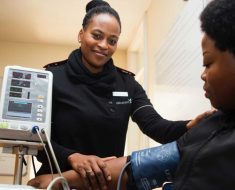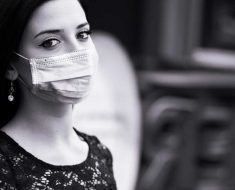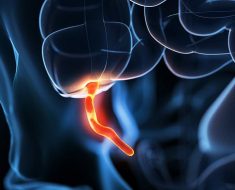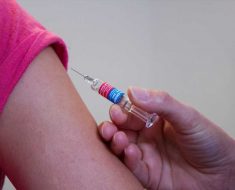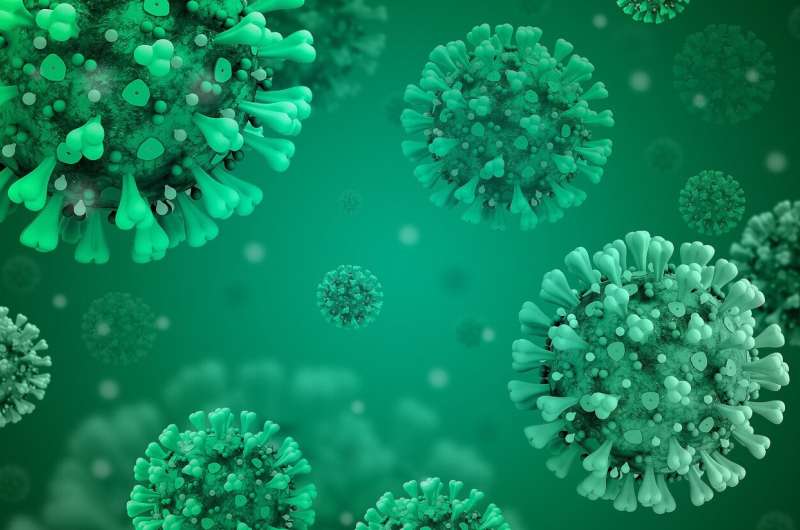
Since the pandemic arrived two years ago, new COVID-19 variant names have filtered from scientific papers to talk around the dinner table.
Remember the delta variant? Omicron? In recent weeks, BA.5 has become the newest version of the virus to take over headlines. It’s a mutation of the omicron variant, which started appearing in the U.S. in late 2021. This variant has a particularly worrisome trait: It’s able to bypass tried-and-true protections like antibodies in the blood from previous infections and the vaccine against COVID-19.
Dr. Mohammad Ali, an infectious disease physician at Penn State Health Holy Spirit Medical Center, offers some facts about BA.5 and how you can protect yourself from it.
How long has science known about the BA.5 variant?
Ali: BA.5 was first identified in February this year in South Africa.
Is the variant more virulent then others?
Ali: The best way to describe BA.5 is that it has enhanced transmissibility compared to previous versions of the omicron variant because it evades immunity from past infections and COVID-19 vaccines.
What are the symptoms of BA.5?
Ali: Symptoms range from mild to severe. Mild symptoms are sore throat, fever, chills, fatigue, body aches, congestion, runny nose, cough, diarrhea and nausea. Some reports suggest that sore throat and fatigue are more common with BA.5. Fewer patients report a loss of taste and smell.
Some people will develop severe symptoms like trouble breathing, chest pressure, confusion and drowsiness, which would warrant immediate medical attention.
I’ve heard the illness it causes is less serious than other forms of COVID. Is that true?
Ali: The general idea is that omicron variants are associated with less severe disease (decreased risk of hospitalizations, death, length of stay in the hospital). It could also be attributed to the fact that we have in general more immunity against COVID-19 due to millions of previous infections and COVID-19 vaccines.
For BA.5 in particular, some parts of the world, such as Portugal, the United Kingdom, New Zealand and Australia, showed increased hospitalizations. It could be because the number of cases is increasing, and even a small percentage of people ending up in the hospital would cause the number of hospitalizations to go up. BA.5 is now the predominant variant in the U.S. and the next few weeks will determine if we see an increase in hospitalizations.
I am expecting an increase in hospitalizations due to more re-infections owing to BA.5’s ability to evade preexisting immunity.
Will the vaccine still protect me from BA.5?
Ali: With BA.5, we will see more cases of breakthrough infections in vaccinated or boosted people and those who had previous infections. However, vaccines plus boosters still provide great protection against severe infection, hospitalization and death.
Is there a new version of the vaccine in development against this specific strain?
Ali: Vaccines manufacturers recently reported data from clinical trials with modified vaccines containing the older omicron BA.1 component but were advised to re-submit data with a modified vaccine against BA.4 and BA.5 for consideration.
Manufacturers seem to be working on a newer version of vaccine targeting BA.4 and BA.5 subvariants and might be ready by October.
Are there any over-the-counter drugs that can help me lessen the symptoms of BA.5?
Ali: For many mild symptoms, over-the-counter Tylenol, ibuprofen and cough medications might be helpful.
There are also some outpatient treatments ― antivirals like paxlovid, molnupravir and monoclonal antibodies ― which can reduce the chances of getting a severe infection. These therapies can be helpful in high-risk patients. Please consult your primary care physician to find out if you would qualify for any of these treatments.
Of the COVID patients you’re treating, what percentage have the BA.5 variant?
Ali: BA.5 is the dominant variant. More than 80% of new cases in the U.S. are BA.5, so it is safe to assume that most of the infections I am seeing involve the BA.5 variant.
What’s the best way to prevent the spread of BA.5?
Ali: This is the most important question.
First, it is important to know that reported cases of COVID-19 might be an underestimate of the true picture because many people are resorting to home tests for diagnosis and may not report positive tests to health departments or their primary care provider.
There are a few non-pharmacological measures which can help, such as using N-95/KN-95 masks, especially in poorly ventilated, crowded places. It is also important to buy these masks from a reputable source, since there are vendors selling counterfeit masks. We should also pay attention to social distancing, when possible, which is easier since most people spend time outdoors in this weather.
Air ventilation and filtration in workplaces and other crowded places can also decrease spread.
Also, doing a rapid COVID-19 test to check for an infection prior to any large gathering with family and friends can help decrease transmission.
Source: Read Full Article
